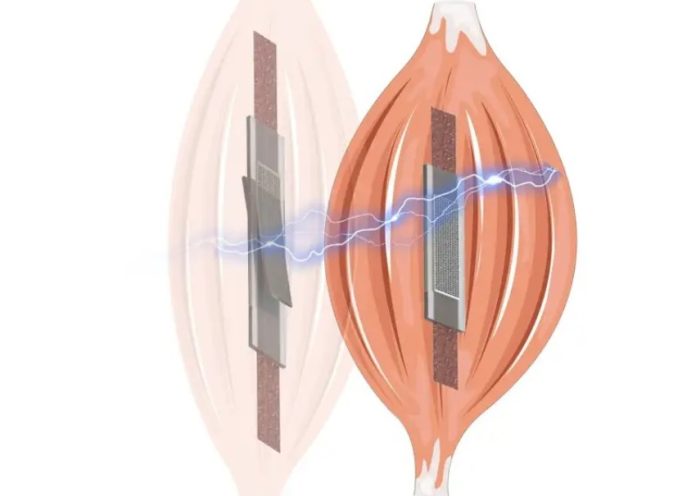
In an exciting leap for robotics, scientists from Queen Mary University of London have invented a special kind of artificial muscle that can feel what’s happening around it and change how stiff it is in response.
This high-tech muscle could play a big part in the future of medical technology and robots.
Their findings were recently published in the journal Advanced Intelligent Systems.
Muscles in living creatures can become hard or stay soft based on what the creature needs to do. This ability is important for things like moving quickly or lifting heavy objects.
The researchers used this natural phenomenon as inspiration and created an artificial muscle that can shift between being soft and hard. But there’s a twist – this muscle can also sense forces and changes in shape!
The lead researcher, Dr. Ketao Zhang, emphasized how important this is for the future of robotics. “Giving robots, especially those made from soft materials, the ability to sense their surroundings is a big step towards true bionic intelligence,” Dr. Zhang said.
The artificial muscle the researchers made is flexible and stretchy, just like a real muscle. This means it could fit well into complex robotic systems and adapt to different shapes.
The artificial muscle can also stretch to over double its original length, showing that it’s very durable.
With different voltages applied, the artificial muscle can quickly adjust how stiff it is. What’s more, this muscle can “feel” its own changes in shape by detecting changes in resistance. This means there’s no need for additional sensors, making the system simpler and less expensive.
So, how do they make this artificial muscle? The process is simple and reliable. They mix carbon nanotubes with liquid silicone using sound waves and spread it evenly to create a thin layer. This layer also works as the sensor part of the muscle.
They sandwich an actuation layer between this layer and a soft metal mesh, and after the materials dry, the artificial muscle is complete.
This technology could have many uses in the future, from soft robotics to helping people with disabilities or patients.
For example, wearable robotic devices could monitor a patient’s activities and provide resistance by changing stiffness levels. This could help restore muscle function during rehabilitation training.
Dr. Zhang admits there are still hurdles to overcome before these medical robots can be used in hospitals and clinics. However, this study is an important step towards integrating humans and machines. “It provides a blueprint for the future development of soft and wearable robots,” he said.
In short, this research is a major milestone in the field of bionics, opening up many possibilities for the future of soft robotics and medical technology.
Follow us on Twitter for more articles about this topic.



